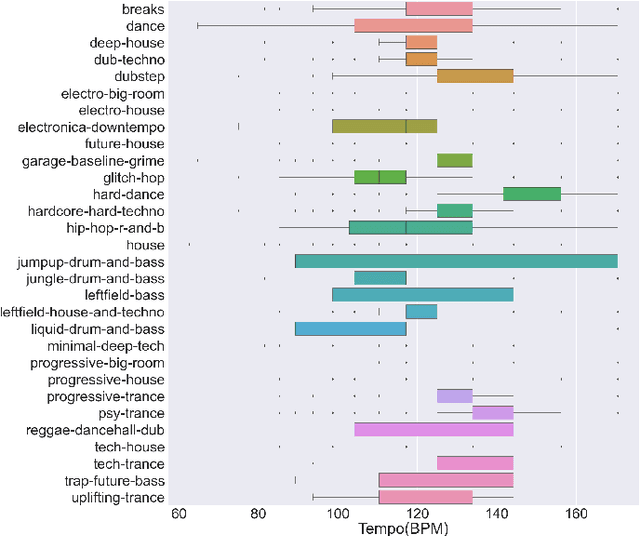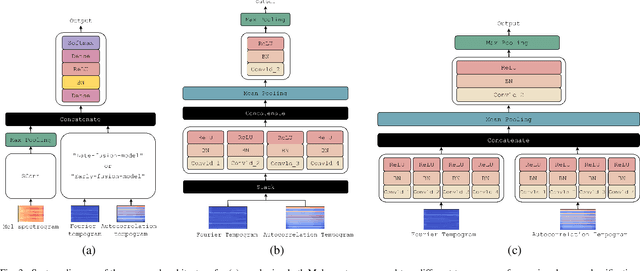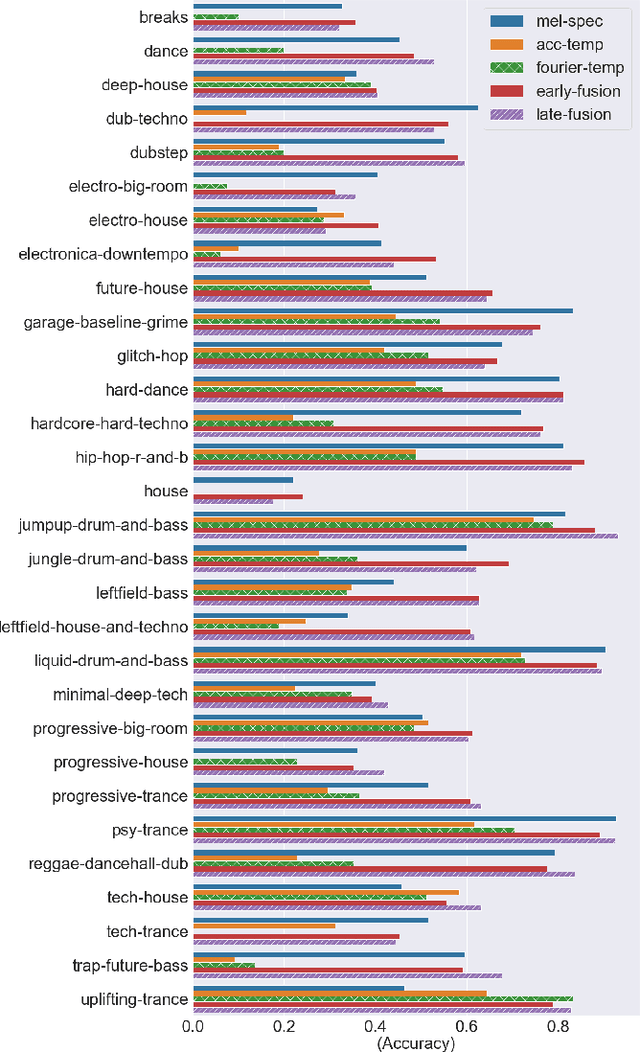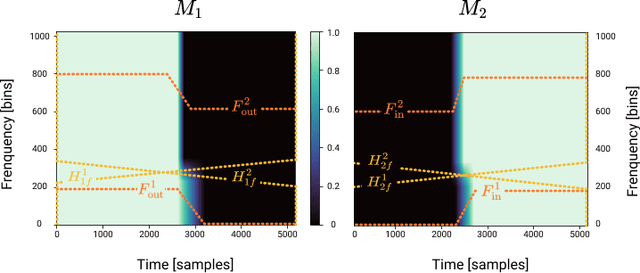Wei-Han Hsu
Deep Learning Based EDM Subgenre Classification using Mel-Spectrogram and Tempogram Features
Oct 17, 2021



Abstract:Along with the evolution of music technology, a large number of styles, or "subgenres," of Electronic Dance Music(EDM) have emerged in recent years. While the classification task of distinguishing between EDM and non-EDM has been often studied in the context of music genre classification, little work has been done on the more challenging EDM subgenre classification. The state-of-art model is based on extremely randomized trees and could be improved by deep learning methods. In this paper, we extend the state-of-art music auto-tagging model "short-chunkCNN+Resnet" to EDM subgenre classification, with the addition of two mid-level tempo-related feature representations, called the Fourier tempogram and autocorrelation tempogram. And, we explore two fusion strategies, early fusion and late fusion, to aggregate the two types of tempograms. We evaluate the proposed models using a large dataset consisting of 75,000 songs for 30 different EDM subgenres, and show that the adoption of deep learning models and tempo features indeed leads to higher classification accuracy.
Automatic DJ Transitions with Differentiable Audio Effects and Generative Adversarial Networks
Oct 13, 2021



Abstract:A central task of a Disc Jockey (DJ) is to create a mixset of mu-sic with seamless transitions between adjacent tracks. In this paper, we explore a data-driven approach that uses a generative adversarial network to create the song transition by learning from real-world DJ mixes. In particular, the generator of the model uses two differentiable digital signal processing components, an equalizer (EQ) and a fader, to mix two tracks selected by a data generation pipeline. The generator has to set the parameters of the EQs and fader in such away that the resulting mix resembles real mixes created by humanDJ, as judged by the discriminator counterpart. Result of a listening test shows that the model can achieve competitive results compared with a number of baselines.
 Add to Chrome
Add to Chrome Add to Firefox
Add to Firefox Add to Edge
Add to Edge